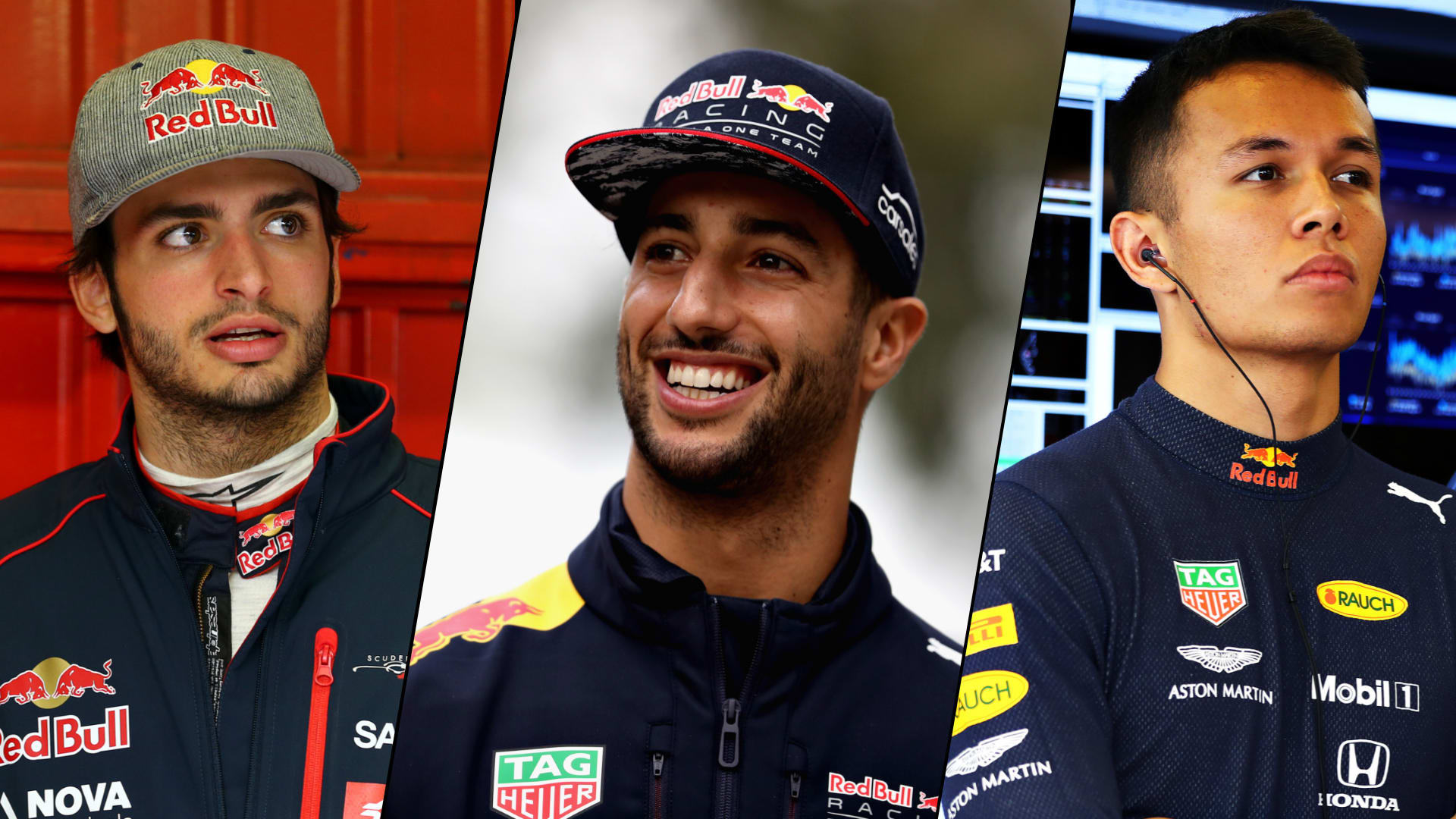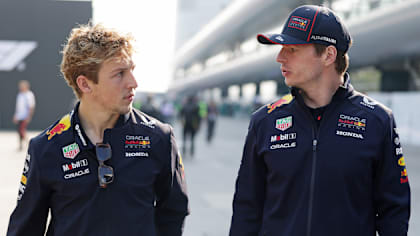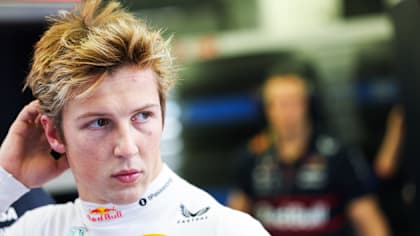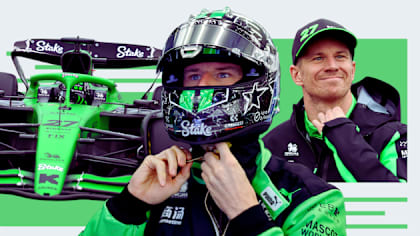Feature
Jolyon Palmer's Analysis: The four keys to pulling off a Verstappen-like comeback
Share
Sunday’s Grand Prix in Austria saw a superb comeback drive from Max Verstappen. How did he get the job done? By following four golden rules...
Key #1: Being bold early on
Too many revs and too big a clutch drop meant Verstappen had anti-stall kick in as the lights went out, and he quickly plummeted from second down to eighth.
The comeback started immediately. Having just lost a place to his team mate, Verstappen took no prisoners, re-passing Pierre Gasly around the outside of the fastest corner on the circuit in a lovely move at the end of the first lap.
The next two passes for Verstappen were relatively comfortable, on Lando Norris and Kimi Raikkonen, both on the inside of Turn 3.
The key to Verstappen’s win came on the following laps, when Valtteri Bottas pitted and triggered Charles Leclerc to do the same. Sebastian Vettel had already pitted in the other Ferrari – leaving Verstappen in a lot of space, only Lewis Hamilton out front.
Hamilton at this point was in a very strong position… until he damaged his front wing, leaving prime position to Verstappen. But the Red Bull driver still had a lot of work to do as he lost so much time early on.
Key #2: Going deep
It seems a fairly mundane phase of the Grand Prix, but extending the first stint in a race can be crucial. That’s because at the end of the race, once the driver pits, they have much fresher tyres to attack.
You can’t really extend the stint if you’re leading, because usually you have to pit to cover off drivers pitting from behind and undercutting you.
This is exactly what Ferrari did with Leclerc, covering off Bottas.
However, I think they still pitted Leclerc at least a few laps too early as his margin to Bottas was comfortable, and at this point Hamilton and Verstappen were posing the greater threat.
Critically, Verstappen kept his pace up on the used tyres, so he didn’t lose too much time compared to those behind who had pitted for new tyres.
Then when he came out of the pits, ahead of Hamilton now, thanks to Hamilton’s front wing change, he simply could charge to the end. Crucially, his tyres were fresher than his rivals by nine laps.
Verstappen earns the DHL Fastest Lap Award in Austria
Key #3: Being incisive and decisive
Verstappen was now a man on a mission.
Blistering pace, combined with incisive overtaking, meant he didn’t lose much time passing Vettel, and he probably gained time by passing Bottas with the DRS, such was the limpness of the Finn’s defence.
By now, Verstappen would have had only one target in mind.
He was fortunate to be lapping team mate Gasly at a convenient time as well. Gasly just held Leclerc back a bit through the twisty middle of the lap, to allow Verstappen to close within the DRS zone slightly sooner than he otherwise might have done.
Then it was just a case of watching and reacting.
Key #4: Playing the tactical game
Verstappen was very astute in passing Leclerc, making sure his earlier hard work paid off.
Turn 3 was Verstappen’s hunting ground. It’s the best overtaking spot on the circuit – the biggest braking zone.
The first attempt was defended by Leclerc, but only to the middle of the road. Verstappen stayed outside, trying to pass on the exit, but Leclerc was wise to this one as well as he just held back on the apex to get a strong exit.
But on this first try Verstappen would now be aware that there was a space on the inside if he wanted it in the braking zone.
Next time round he stayed to the left for as long as possible, keeping his powder dry, before diving into the gap on the inside he knew would be there from the lap before.
Sure enough it was still there and Leclerc seemed snookered. But Verstappen was very kind to his rival on the exit and Leclerc somehow picked up good traction and outdrove the Red Bull down to Turn 4, with superior straight-line speed in his Ferrari.
But again, Verstappen learnt for the next lap, the decider.
READ MORE: Honda admit engine was 'on the edge' during Verstappen's Austria victory
Unlike his rival, Leclerc didn’t learn from Verstappen’s attempt the lap before. It was becoming obvious Verstappen wanted to attack the inside into Turn 3, but this time Leclerc stayed even wider than the lap before, assuming he could do the same on the exit.
Once again Verstappen took the inside, but this time he went in slightly deeper. Then he got on the throttle early and released the steering slightly on the exit, ensuring he elbowed his rival out of space and off the track.
An incisive move from Verstappen that was three laps in the making.
Max Verstappen: Move on Leclerc was 'racing': if not, 'it's better to stay at home'
My verdict on that pass
Leclerc was undoubtedly a bit naive into the corner, and should never have given Verstappen the high ground on the inside, and a position where he could be forced wide.
As Verstappen went in a bit deeper on the final lap, Leclerc could have potentially looked for the switchback as well, rather than try to hold on the outside as he did the previous tour.
But there is no doubt he was forced off. Was it intentional and slightly cynical from Verstappen, or was it his natural momentum that forced him there in a bout of hard but clean racing?
To me, it’s tough to call either way. I’d lean towards the intentional side, but the stewards leaned the other way and, for the race outcome, that’s probably the ideal ending.
It was a tremendous race and the final move completed one of the best comeback drives in recent Formula 1, made through bold overtaking, solid strategy and good tyre management.
This must go down as Max Verstappen’s best Grand Prix victory to date.
YOU MIGHT ALSO LIKE
News Ex-Red Bull driver Webber assesses challenge facing team after ‘unacceptable’ lap time difference between Verstappen and Lawson
News ‘It’s tough’ – Lawson shares first message after Red Bull seat swap with emotional social media post
News Opmeer and Red Bull crowned champions during F1 Sim Racing World Championship finale in Abu Dhabi
Feature EXCLUSIVE: ‘I’m here for the grind’ – Nico Hulkenberg on his Sauber return, Audi’s impending arrival and targeting F1’s top step




